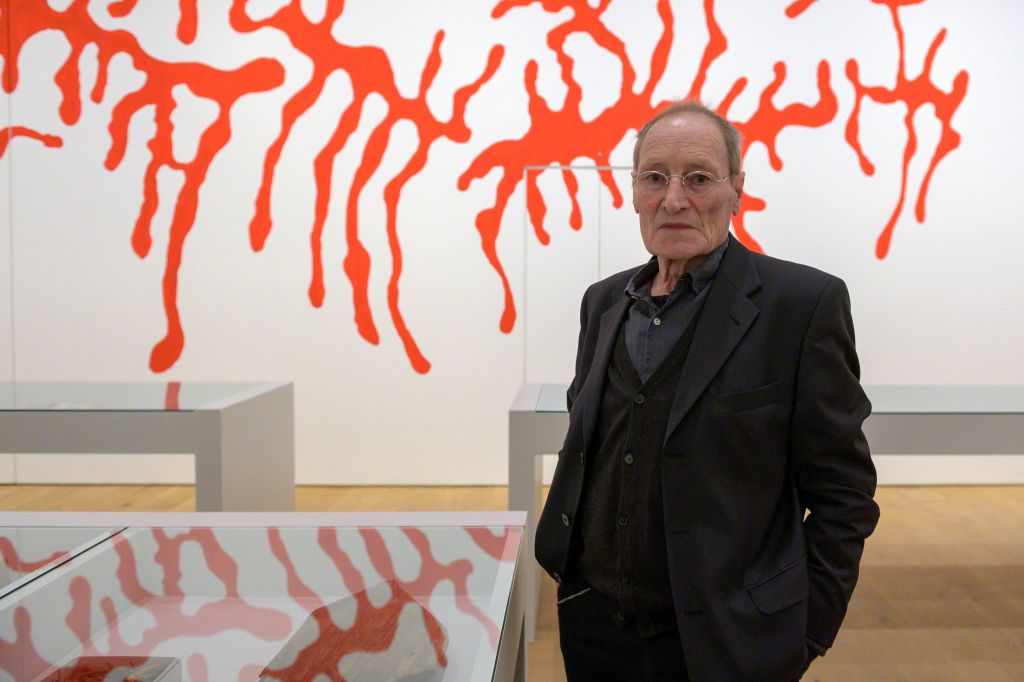[ad_1]
Lois Weinberger, an artist known for his installations that repurposed plants as poetic gestures, died at 72 in Vienna. The Austrian newspaper Der Standard first reported the news of his death.
Weinberger has been considered one of Austria’s most important contemporary artists, though many of his most important works were staged outside his home country—which was a part of his work’s point. Weinberger was long interested in how nature could correspond with migrations and diasporas. “Immigrations happen, no matter what—you have to practice living and dealing with strangers,” he once said.
His most famous work is also one of the most important pieces ever produced for Documenta, a quinquennial held in Kassel, Germany, that counts as one of Europe’s top art exhibitions. Titled Das über die Planzen/ist eins mit Ihnen (1990–97), the work was crafted for Documenta X in 1997 and involved the planting of foreign weeds along a 330-foot-long stretch of disused railway track.
Weinberger’s work became the defining work of Documenta X, and the weeds included in it have been allowed to continue growing in the years since the festival. (It was subsequently restored in 2015.) Many read into the work a message about immigration with its integration of unlike species into a foreign locale. But Catherine David, the artistic director of Documenta X, was reticent to elucidate such a political context, telling art historian Robert Storr, “Lois is very articulate in working with fragile traces of history.”

Stadt Kassel/Nils Klinger
The weeds Weinberger relied on for the piece are known as ruderal plants, which means that they can adapt to any place or climate. Throughout his career, Weinberger continually returned to this kind of plant, and shortly after Documenta X, he created Roof Garden (1998–99), for which he created a garden filled with 40 kinds of plants on the roof of the Watari Museum of Contemporary Art in Tokyo. It was left untended for a year, allowing the plants to grow all over an industrial structure as they might in the wild, and was then taken away.
Lois Weinberger was born in Stams, Austria, in 1947. He rose to prominence during the 1990s after several appearances in major international biennials. For the 1991 Bienal de São Paulo, for example, he planted seeds in plastic bags filled with concrete. Since then, many of his greatest projects have been realized at major art festivals. In 2000, the MUMOK – Museum Moderner Stiftung Kunst Ludwig Wien in Vienna staged his first major survey.
In 2009, he and his wife Franziska were among the artists selected to do the Austrian Pavilion at the Venice Biennale in Italy. (Artist Valie Export served as the pavilion’s curator that year.) While many artists choose to stage their work inside the doors of the pavilion, the Weinbergers moved their piece outside the building’s doors, instead placing it in an adjacent structure made from timber and blue tarp played home to a giant mass of decaying compost for a work called Laubreise.
The use of heaps of organic matter in Laubreise and the plants found in other works have generated comparisons between Weinberger’s art and environmentalist acts. But the artist himself claimed not to have been interested in science so much as spirituality. “As an artist, I am free and not committed to any scientific canon,” he told the Austrian publication Tiroler Tageszeitung in 2019.
Weinberger returned to Documenta for its most recent edition, in 2017, showing a work in the quinquennial’s Athens portion called Debris Field (2010–16), for which he presented the results of a years-long excavation of his family’s farm in Austria’s Tyrol region. Among the objects presented were a mummified cat that was imbued with apotropaic powers and was intended to ward off evil spirits, as well as floorboards, shoes of deceased people, and pieces of centuries-old texts. Each object presented, he said, had “the archaeology of a magically ritualized atmosphere.”
[ad_2]
Source link

